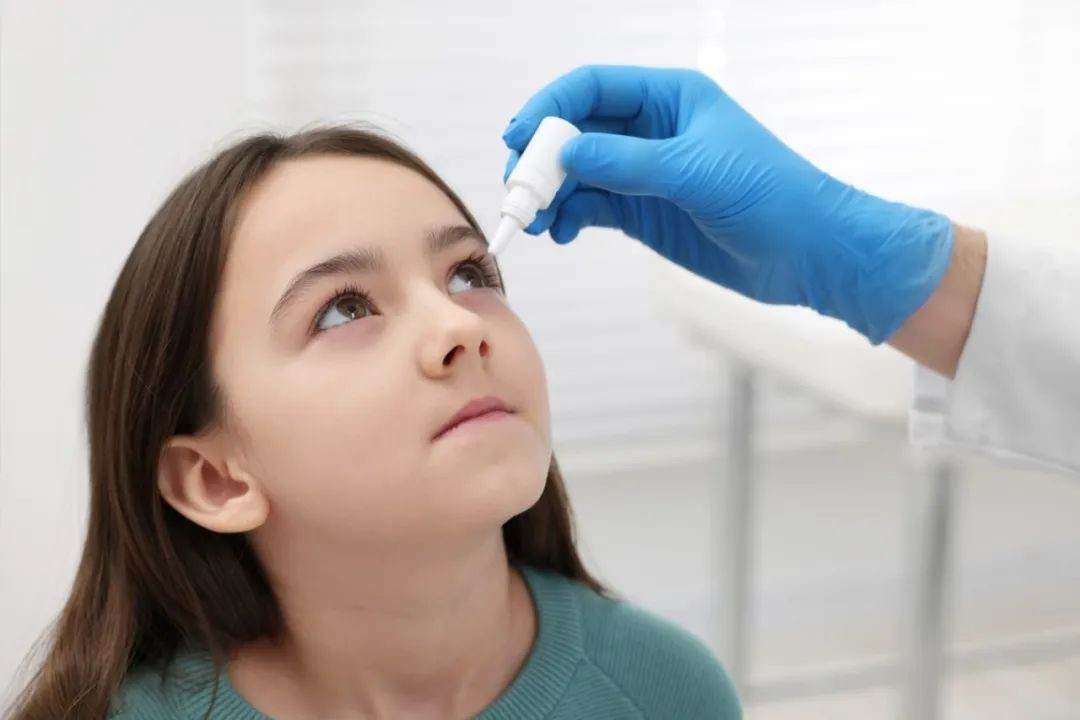Squinting to read blurry text, holding books closer, lowering their heads—children’s vision is silently invaded by myopia. In 2020, the prevalence of myopia among Chinese children and adolescents reached
52.7%:
35.6% in elementary students
71.1% in middle school students
80.5% in high school students
These alarming numbers weigh heavily on parents’ hearts.
Recently, a domestically produced
0.01% atropine sulfate eye drop was approved in China, becoming the first medication officially authorized by the
National Medical Products Administration (NMPA) for myopia control. Once available only through overseas purchases or compounding, this offers new hope for parents.
Touted as a “miracle drug” for myopia, does low-concentration atropine truly live up to its reputation? Is it safe and suitable for every child? Let’s explore.
Q1: Why Low-Concentration Atropine?
Atropine, a parasympathetic inhibitor, relaxes the ciliary muscle. Clinically used since the 1970s, early studies employed
1% high-concentration atropine, which reduced myopia progression by
60–96% but caused severe side effects like photophobia and near-vision loss, limiting its use.
Decades later, Singapore’s
Five-Year Clinical Study on Atropine for Myopia Control (ATOM) highlighted the efficacy of low-concentration atropine. Subsequent research confirmed that
0.01% atropine slows myopia progression by
27–83% with minimal side effects.
To date, atropine eye drops remain
the only medication proven by evidence-based medicine to effectively delay myopia progression.
Q2: Is This “Miracle Drug” Safe?
High-concentration atropine historically caused systemic side effects: facial flushing, dry mouth/skin, eyelid redness/peeling, tachycardia, fever, bloating, and constipation.
Low-concentration atropine significantly reduces systemic reactions. Ocular side effects (e.g., mild photophobia) are rare and reversible upon discontinuation, with low rebound risk.
 Q3: Is My Child Eligible?
Q3: Is My Child Eligible?
Per the
2022 Expert Consensus on Low-Concentration Atropine for Myopia Control in Children and Adolescents:
Age: 4–16 years old
Children under 6 require strict monitoring.
Patients over 18 with rapid progression or high visual demands may extend usage.
Early intervention for high-risk factors (e.g., family history of high myopia, early onset, high initial refractive error).
Myopia Degree: ≥50D progression/year or ≥0.3mm axial elongation/year.
Note: The newly approved
Xingqi 0.01% atropine sulfate eye drops target children aged
6–12 with spherical refraction of
100–400D (astigmatism ≤150D, anisometropia ≤150D).
Strict medical supervision is mandatory.
Q4: Can I Purchase Atropine Without Prescription?
No. Low-concentration atropine requires comprehensive ophthalmologic evaluation, a doctor’s prescription, and regular follow-ups to ensure safety and efficacy.
As one of the first institutions to offer this medication,
Renshu Eye, Ear, Nose & Throat Hospital will soon provide
0.01% atropine eye drops for eligible children.
Reminder from Renshu Ophthalmologists
Low-concentration atropine
slows myopia progression but does
not reverse or cure it. It complements optical corrections (glasses or OK lenses).
Discontinue immediately if side effects occur (e.g., photophobia, blurred near vision, elevated IOP, redness/itching) and seek medical care.
Avoid overestimating its “miracle” effects!
Scientific rigor and professional guidance are key to safeguarding your child’s vision.
